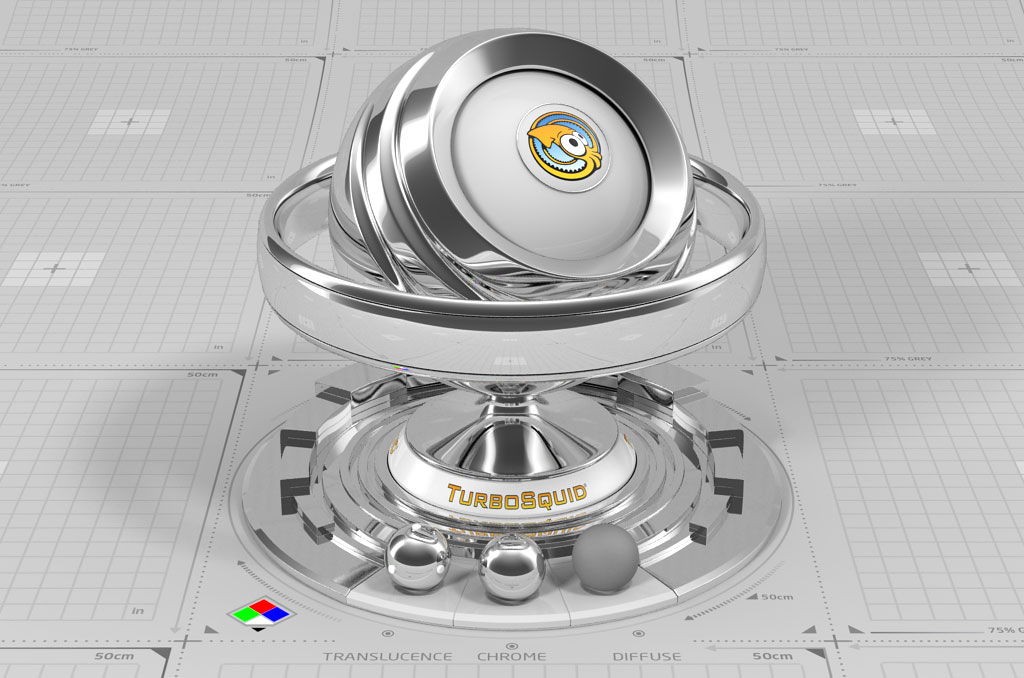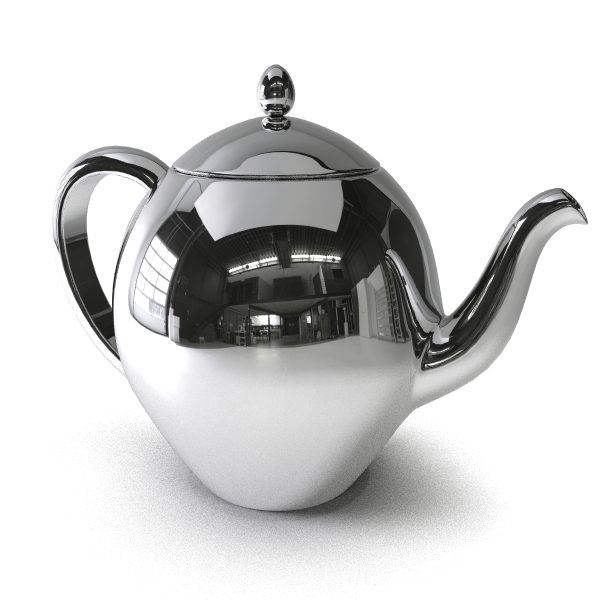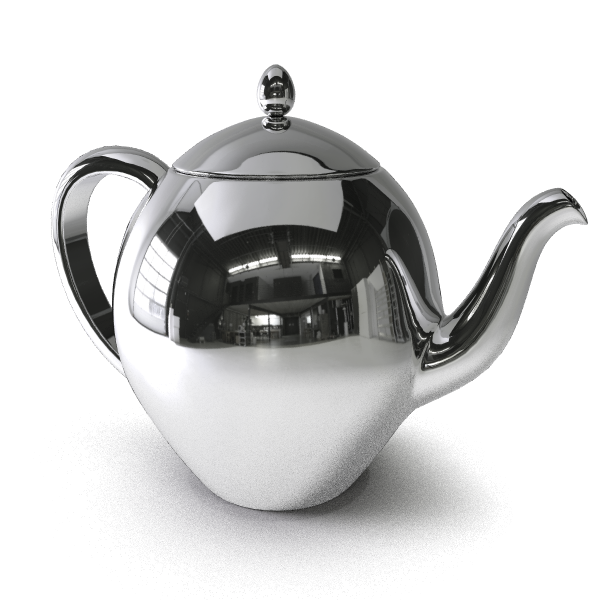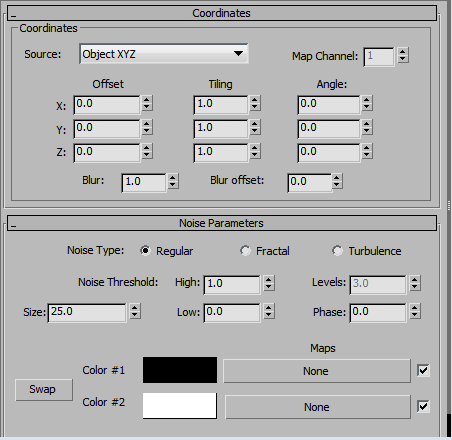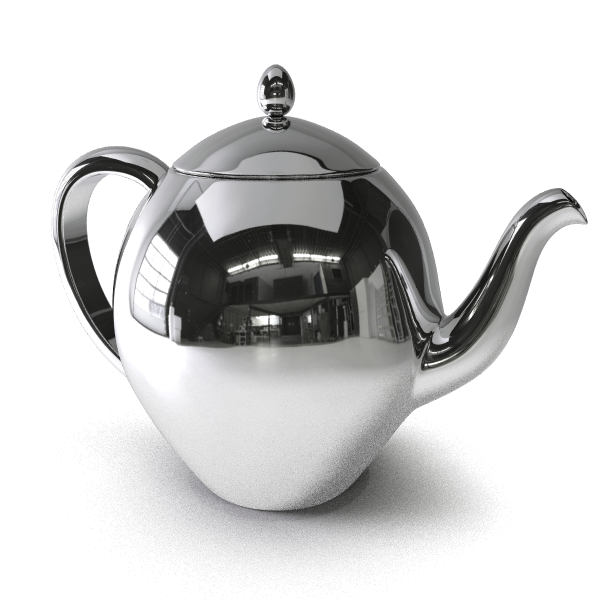Like most metals, chrome is highly reflective and its appearance is determined almost strictly by its reflections. The Diffuse component in this shader needs to be very dark. This means that we can start by setting the Diffuse color of our VrayMtl to almost black (1;1;1) and the Reflect color to a high value like (230;230;230).
While this already looks pretty good, it still looks a bit fake, since nothing in the real world is this perfect. Every surface has some unevenness to it and nothing is so perfectly polished that the reflections are this sharp. These little details can help a lot in making the shader more believable.
Here are our sample Noise map settings. The Noise Size might need some adjustment, depending on the size of the object.
This is a good method for creating a realistic, clean, polished Chrome material without using any bitmaps or complicated techniques.

